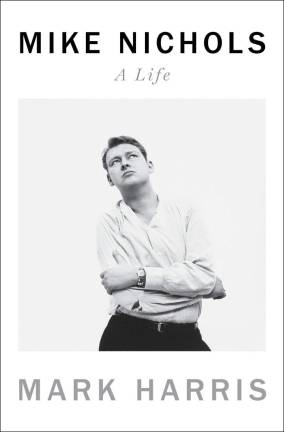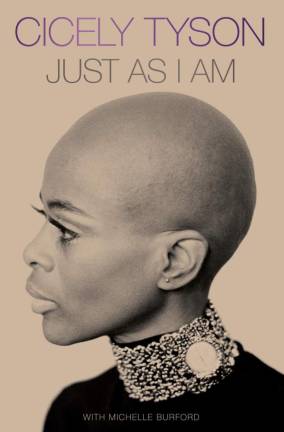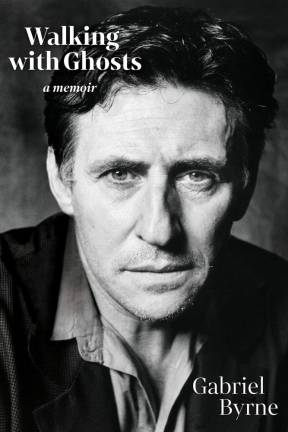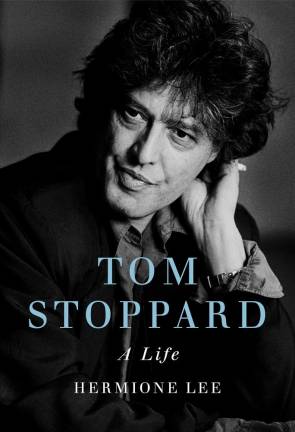A Month of Theatrical Memories
Four books by stars of the stage (and screen) make us feel like we are back in the theater




If you are interested in how directors, actors, and writers work their magic on stage, this is your lucky month. A quartet of books by, or about, people who truly have made a difference as artists, have hit the shelves. They are filled with gorgeous writing, anecdotes from an array of famous folks, and yes, some juicy gossip. Two of the subjects are no longer with us.
Probably the one getting the most attention is “Mike Nichols: A Life,” written by Mark Harris. This is 600 pages that take us inside the process that won Nichols nine Tony awards, one Oscar, one Emmy, and countless accolades. An immigrant from Berlin — who lost the ability to grow hair after a childhood reaction to a whooping cough vaccine — he made it to the University of Chicago and the improv world, where he teamed up with Elaine May. They went on to best-selling albums and a Broadway show. Though Nichols married four times — including a happy final 25 years of his life with Diane Sawyer — May was possibly the most important woman in his life.
Author Harris’ last two books (“Five Came Back” and “Pictures At a Revolution”) dealt with many important Hollywood figures, at defining moments (WW2 and the 1967 Oscar race). This one focuses on only a single man.
“I like going into projects with excitement and fear,” Harris says. “In the last two, I had the luxury of playing with a cast of five or six main characters. This time I was following one through 83 years with nothing and no one else to cut to. But Mike’s life was long and interesting enough and he was part of so many cultural worlds.”
Well, Harris had plenty of others to “cut” to. He interviewed 250 people “and I could have talked to 100 more,” he claims. This book is chock full of Nichols’ unique directing techniques (telling countless personal stories, putting his leading lady and man on a bed and have them read an entire script aloud), his resilience from serious bouts of self-doubt and depression, and his relationships with just about every important entertainment figure of his times. (Along with those he fired, like Gene Hackman and Mandy Patinkin)
“Inexplicable Ease”
One with whom Nichols (who died in 2014) did not work with was Cicely Tyson, who passed away a few weeks ago. Her book, “Just As I Am,” is beautiful and surprising. Who knew that she gave birth to a daughter as a teen, worked countless clerical jobs to make a living, began modeling at 30 and, reluctantly, tried acting soon after. There is a great deal of emotion in this one. I cried just reading Viola Davis’ Forward.
Tyson is completely honest — and human. Discussing the first time she ever read a scene with someone, she writes, “When a pivot is predestined on the stone tablet of your life story, there is often an inexplicable ease to it. That is how reading that scene felt to me.” She is likely best remembered for her Oscar-nominated role in “Sounder,” and, of course, on TV’s “The Autobiography of Miss Jane Pittman.” But those who were lucky enough to see Cicely Tyson onstage, in works like “The Gin Game” and “The Trip To Bountiful,” will never forget her.
The most important play for her, however, was Jean Genet’s “The Blacks,” on which almost every performer of color eventually worked in New York’s East Village. “It became the defining role of my blossoming career,” she writes. ”Even at age ninety-six, I am still arriving. But being cast in that show was the closest I’ve come to experiencing that delight.”
She was a tiny lady — who had a tempestuous marriage to Miles Davis — but she was a strong one, who made up her mind early to follow her better angels and only do work that mattered.
Speaking of great performances, those who saw Gabriel Byrne’s in the 2016 Broadway production of Eugene O’Neill’s “Long Day’s Journey Into Night,” will also remember it for years. Like Tyson, the Dublin-born Byrne has also acted in films, (“The Usual Suspects:) and on TV (HBO’s “In Treatment”). But reading his memoir, “Walking With Ghosts,” one will likely be surprised to learn that he spent four years at a seminary studying to join the priesthood. Then he tried plumbing and failed at that. Also like Cicely Tyson, his love of performing came later — but just in time. “This new sense of belonging overwhelmed me,” he writes.
As with all these books, Byrne’s — though in a non-linear narrative — offers plenty of name-dropping (not to mention alcohol), and tales of the journey to starring roles. “I had ten lines in six countries,” he says, about one early film. But he was there with names like Burton, Olivier, Redgrave and Gielgud. One of my favorites of his sentiments: “To imagine and remember can be the same thing.”
“Ideal Pairing”
The final theater-based book of this month is about the incomparable playwright Tom Stoppard, a former close friend, and sometime collaborator, of Mike Nichols. (The two books even share a title: “A Life.”) This one, arriving in a few weeks, is not a memoir per se, but the author, Hermione Lee, clearly worked closely with her subject, who is now 83.
I believe the first play I saw on Broadway was Stoppard’s “Rosencrantz and Guildernstern Are Dead.” I enjoyed many others over the decades, even those that my brain could not entirely grasp. (It took me three productions of “Arcadia” to fully appreciate it.) I have never laughed harder than during his early one-act about politics called “Dirty Laundry.” He and Nichols collaborated on Broadway’s “The Real Thing.”
“They were an ideal pairing,” writes Mark Harris. “Both emigres, and in Nichols, Stoppard found, for the first time, a director with a natural ear for the European-tinged musicality of his dialogue. Nichols adored Stoppard, saying, ‘Tom and I had nothing but laughs and joy.’”
At one of many events honoring Mike Nichols, Stoppard said, “people ask me, ‘do you write for yourself or for the audience?’ For the last thirty-five years, I’ve wanted to say, ‘No, I write for Mike Nichols.’”
Which brings us back to where we began. We can’t go to live theater yet, but these four books make us feel like we are there. Enjoy.